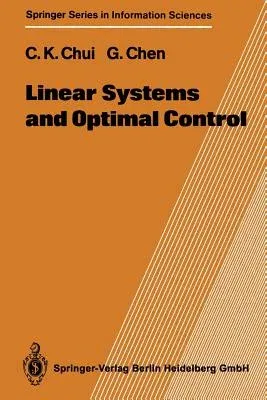Charles K Chui
(Author)Linear Systems and Optimal Control (Softcover Reprint of the Original 1st 1989)Paperback - Softcover Reprint of the Original 1st 1989, 15 April 2014

Qty
1
Turbo
Ships in 2 - 3 days
In Stock
Free Delivery
Cash on Delivery
15 Days
Free Returns
Secure Checkout
Part of Series
Springer Information Sciences
Part of Series
Springer Series in Information Sciences
Print Length
155 pages
Language
English
Publisher
Springer
Date Published
15 Apr 2014
ISBN-10
3642647871
ISBN-13
9783642647871
Description
Product Details
Authors:
Book Edition:
Softcover Reprint of the Original 1st 1989
Book Format:
Paperback
Country of Origin:
NL
Date Published:
15 April 2014
Dimensions:
23.39 x
15.6 x
0.91 cm
ISBN-10:
3642647871
ISBN-13:
9783642647871
Language:
English
Location:
Berlin, Heidelberg
Pages:
155
Publisher:
Weight:
244.94 gm

